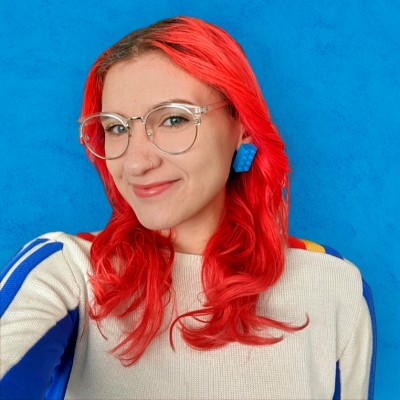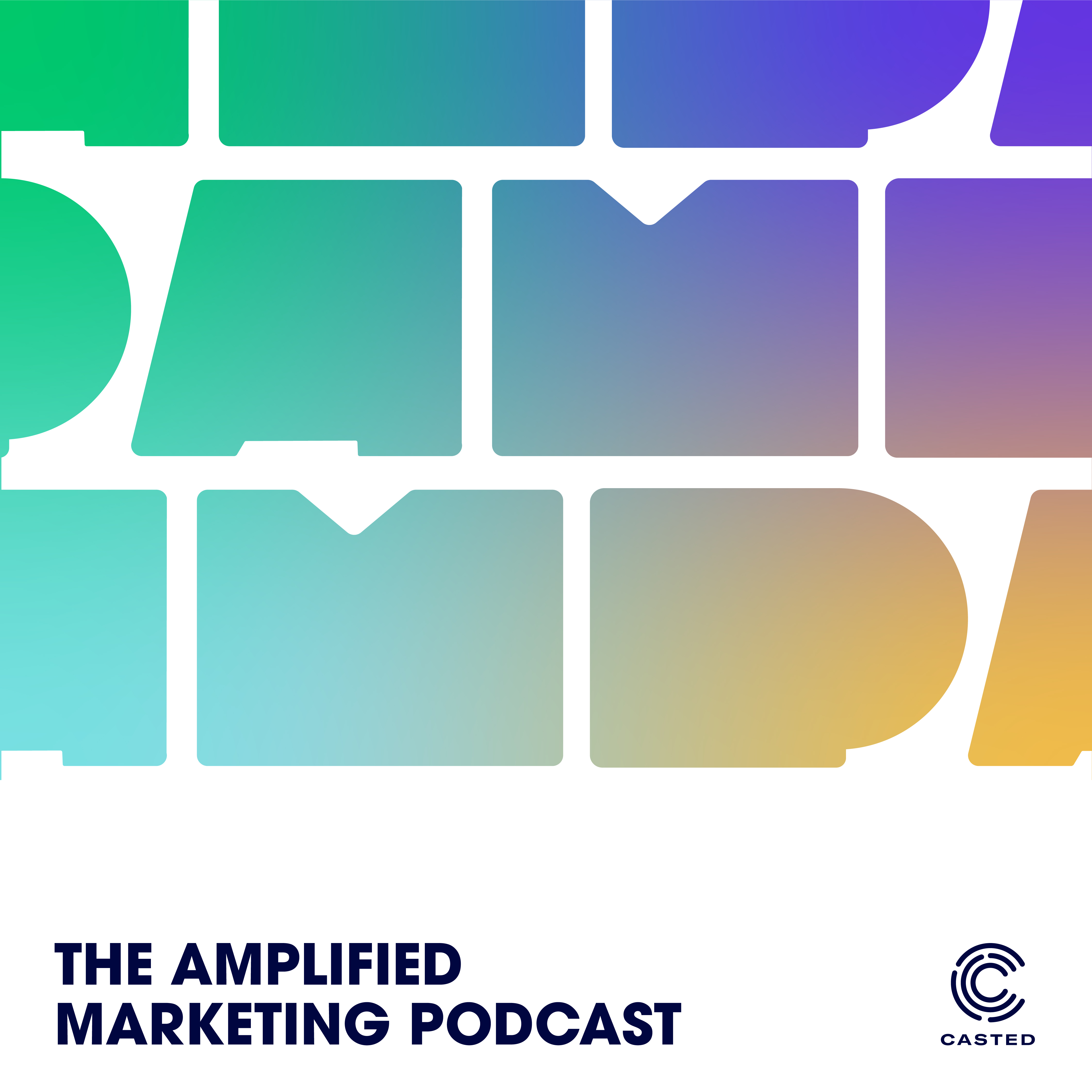How B2B Podcasts Grow Up: How to Maximize Your Podcast Content
- 0.5
- 1
- 1.25
- 1.5
- 1.75
- 2
Lindsay Tjepkema: There are so many fantastic examples of brands using their podcast as the center of their content solar system. You've heard the how, but sometimes you know what's just as valuable? The how not too. Right? So what mistakes have the B2B podcasters before us made? What have they learned about their audience? What has their team done to get extra firepower out of their content? We'll answer these questions and so many more in this final episode of the Stage Four Podcast Maturity Curve series, multi- channel expansion. I'm Lindsay Tjepkema, a lifelong marketer and proud CEO and co- founder of Casted, the B2B marketing platform for brand podcasters. And I've teamed up with experts across the top sales and marketing teams in the world to detail each of the five stages of this maturity curve and what you can do to launch and grow a show with confidence. This is how B2B podcasts grow up. An original series from Casted. By far, the most common theme we've heard from our guests is the absence of repurposing strategy from the very beginning of the show. Now, it won't make or break the success of your podcast ultimately, but it may give you more aggressive growth, faster than if you solely rely on growing your podcast platforms alone.
Kira Singer: When the pandemic hit and we started doing so many webinar, we had a lot of time invested in need. How do we get more out of them? And that's when this epiphany box idea came with kind of like what can we get out of each thing and what can we promise speakers they'll get every time? So they'll get the recording, they'll get usually an edited version that's shorter, and then a transcript and it started with just the transcript and then they'll get it sent out in an email. And so as we found Casted and the ability to amplify was one, made easier and two, quicker, we were like, " We can add transcripts, we can add blog because you can just take the transcript and key takeaways, playlist, and all these things that we can do." And it really just stemmed from honestly being a small team and how can we get the most thing for our buck.
Lindsay Tjepkema: By leveraging their podcast assets and their interview guests, Kira and her team at Oak Street Funding were able to grow their show quickly, but if they had started doing that sooner, man oh man, would they have shot that through the podcast charts and also really impacted their brand much faster. Jordan Feise of Gong has a similar thought, but extends her content repurposing to the sales team.
Jordan Feise: Obviously we have customers on, we have prospects on, thought leaders, everyone in between, but the turnaround time for a case study or doing a co- promoted ebook or webinar, it's a lot more heavy lifting. We do a reveal episode every single week and we've also leveraged it as a touchpoint within sales cycles as well of like, " Hey. We know you're talking to so- and- so. It's going to be a long sales cycle. Bring them on reveal. It'll be a relationship building touchpoint," and then we can also take that interview and re- target it back at that organization.
Lindsay Tjepkema: Yeah.
Jordan Feise: That's what our account based team does. So, so many different advantages and things, but I think it did force us to step back and say, " What does this mean for us? How does it fit in to our overall content strategy?"
Lindsay Tjepkema: But OpenView Venture Partners marketing extraordinaire Meg Johnson says, " Not so fast. Before thinking about distribution, you must, must, must make sure that the content is top notch." We can get caught up in the number of downloads as a podcasting key metric way too easy, but Meg reminds us of the all important consumption metric.
Meg Johnson: Don't let distribution distract from the listener experience. I kind of started to get into this a little bit, but it's easy to get caught up in ways to share your podcast. So just like I was saying, it's easy to get caught up into the growth hacking and the trends of what people are doing to make your show have wider reach, so to speak, but don't forget the basics. Again, go back to your intent. Is your intro impactful? I think things like that where you can really focus on getting the key takeaways of the episode in the first minute or two really helps for listener retention and I think more often than not, people are starting to look more at listener retention than just overall listens just because of the way they're calculated. A podcast listen might be only a few seconds or 30 seconds or a minute or two of your episode, which could be like an hour long versus if you're getting really high list of retention, that's a way better indicator letting you know that what you're doing is working and that people really want to spend time with you or your brand. So my recommendations would be to add a teaser clip from later in the episode at the very beginning of the episode to where people in and hook people. And then Blake records his personalized intro after we do the podcast recording so that way he can think about the entire conversation he just had and then pull up the takeaways so that it feels like we're not forcing the conversation to fit the intro, but instead fitting the intro to fit the conversation.
Lindsay Tjepkema: If your audience doesn't enjoy the content, they won't stay until the end of your show. They definitely won't come back and they're likely going to miss out on the important calls to action, the messaging, the sponsor reads, the advertisements. Listener retention is king or queen. Meg also wanted to get to the point about your audience not dreaming about you. Beware of main character syndrome, seriously, where you think the podcast world and your audience revolves around you. It happens to the best of us and in the end, your listeners are going to care what they can learn from you. They want to know what's in it for them.
Meg Johnson: It's not about you. No one's waiting on the edge of your seat for you to drop that one launch post about that piece of content. You need to give people plenty of times and options of when they can see this content in their feed by posting multiple times over an extended period of time. Content has a way longer shelf life, but people only post it once because they assume everyone's on the edge of their seat just waiting for their next content drop when that's just really not the case.
Lindsay Tjepkema: Don't be afraid of what you think is bothersome marketing. Your audience chose to listen to you and they care about what you have to say. That's why they're there. They want to know what your newest content is and they want to know when it drops. It's safe to assume that they do need a little bit of help finding it. So ping them, let them know. Rowan Tonkin took a different approach via acquisition of another company and their content.
Rowan Tonkin: We're observing what a really small high performing team did and we're like, " Okay. How can we steal all those good ideas and make them our own? How do we absorb some of that strategy and try and drive that forward?" I think the key here is this isn't like a MarTech into a MarTech audience and so our audience is the same. This is an acquisition where, for Planful, it expands our reach into an audience that we otherwise couldn't have reached under our own brand. And so as we think about the strategy that Peter and Scott have been executing on, we want to keep that going. They've literally wrote the book on it. So we're not going to just, and I'm not going to just, take everything that they've done and throw it out the window and say, " It's all my strategy now." We're going to take the best bits of that and try and accelerate it as much as possible. What is really important to us as a brand now is taking those best bits and figuring out, " Okay. Well what does each audience need and where is there a combined need and how can we leverage that existing content to deliver something of value to the combined audience, but also what does each distinct audience need in its field?" And then there's lots of branding decisions that need to go along with that.
Lindsay Tjepkema: So you've heard these success stories and how our experienced guests grew their shows from zero to one and then one to 10 and on up from there, but what about the missteps? What mistakes have they made in growing their shows too fast or too slow? In looking at the data and measuring ROI, here's Meg Johnson on just that.
Meg Johnson: What we try to do, and that was with the help of Casted really especially with our podcast, was be able to not only track the growth of our podcast, how many listens are we getting? Is it increasing quarter over quarter? Genuinely is the content resonating? Like yes, but it doesn't matter as much if the end ROI of founders who want to talk to us is not increasing. And so basically that was the missed step there is for a while, we kept saying, " How do we correlate these brand touchpoints, whether it's our blog or a video series, our podcasts, with the prospect journey of someone,'cause we know it's happening, we just don't know where. Where is it happening because people are telling us all this anecdotal evidence constantly that this is really resonating with me or an associate might reach out to someone to try and break in and they would be like, " Oh, I know of OpenView from your content," but how do you track that? Again, this is really hard. So what we did was we actually connected HubSpot to Casted and we were able to track when people were listening to a specific podcast and then now we can actually tag that as a milestone in the prospect journey. And so basically we can see that they are going from maybe unaware of OpenView to aware. And basically our prospect journey goes one end of the spectrum is unaware, they don't know who we are, that we exist, to the complete opposite side of the spectrum, which is they are an OV champion, they love us, they are telling all their family and friends about us, et cetera.
Lindsay Tjepkema: Before you launch your show, determine your goal. What's the ultimate positive outcome from a podcast in your larger content marketing strategy? More leads, more consultations, more sales, more demos. Who's it for and why are you doing it? Attribution is critical and it's hard, especially in the podcast world, but I think Meg and OpenView have really nailed it. Meg has thoughts on why we marketers have a tendency to feel spread thin when we use an omnichannel approach.
Meg Johnson: I think the first step to resonating is creating some sort of connection over a shared memory or a shared story, a vision, and I think that's why some founders really dive deep into the brand and they feel so emotionally connected to the brand that they build because it really is a story, it's an idea, it's a vision, it's a part of them, and I think that once you have that resonance and you have that story, that is something that you can continuously call back to and align on with your organization. And so I think being constantly, even though when you're starting to feel like you're swimming upstream and not going anywhere, if it feels like that, start going back to aligning on what it is you're both trying to do and then work backwards from there. Whenever I'm having a miscommunication issue or I feel like I'm not being heard or feel like I'm misunderstanding someone else, what I like to do is just go all the way at the top, " What's the one thing that we agree on? Even if it's the sky is blue, let's start there. Let's start with the sky is blue and then talk about how the grass is green and then talk about here and work our way down," because I think that is a powerful way to communicate and it shows that authentically your intentions are to communicate and it's not, " Just listen to me. I just want to take this money and I want to make this cool thing." The more that you can try to hear each other out and meet each other halfway, the more success you'll have.
Lindsay Tjepkema: Your story is part of you. No matter what the content is that you're creating or how many platforms you're on, the only thing that you can control is the message that you deliver. Dedication to your brand is what matters and that's how you grow your audience. Consistency, authenticity, and trust. That's a great spot to leave today's message. Thank you so much, Meg. And that's a wrap. You just heard the third and final episode of stage four of the Podcast Maturity Curve Series. Thank you so much for tuning in and thanks for the reason that this series will exist, it's you. The podcast strategy and multi- channel expansion experts, Kira Singer, Meg Johnson, Jordan Feise, Rowan Tonkin, Peter Mahoney, thank you so much for being a part of this series. And if you want to hear more about their interviews with me or learn more about their approach, no problem. Check out their full conversations with me linked in the resources section below. I'm Lindsay Tjepkema, CEO and co- founder of Casted. You can find me on Twitter at Casted Lindsay or on LinkedIn. If you enjoyed the show, consider leaving us a rating. Next up on the Podcast Maturity Curve Series is stage five where we discuss how to use your podcast to amplify your marketing strategy and your overall brand and drive, ultimately, business impact. You don't want to miss those episodes. Until then.
DESCRIPTION
You’ve heard plenty of how to when it comes to podcast growth. But not enough how not to.
The third and final episode of the fourth stage of the podcast maturity curve series How B2B Podcasts Grow Up concentrates on what our expert guests would change about how they approached multichannel expansion. What did they do successfully and what mistakes did they make?
Get the inside scoop from Kara Singer of Oak Street Funding, Meg Johnson from OpenView Venture Partners, Jordan Feise of Gong and Rowan Tonkin and Peter Mahoney at Planful. And my insights too!
Today's Guests
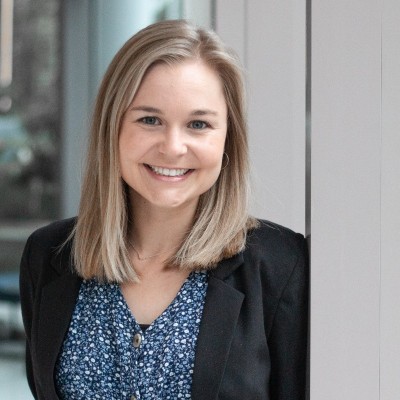
Kira Singer
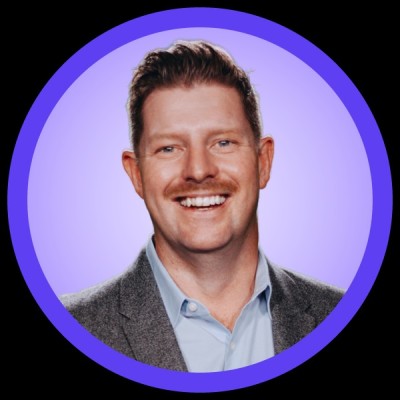
Rowan Tonkin
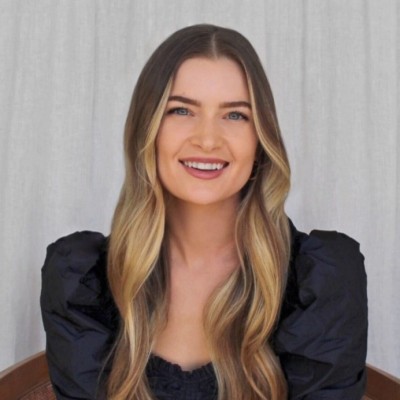
Jordan Feise
